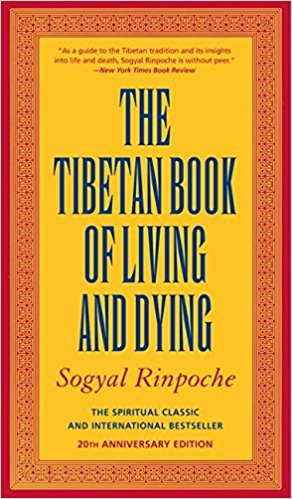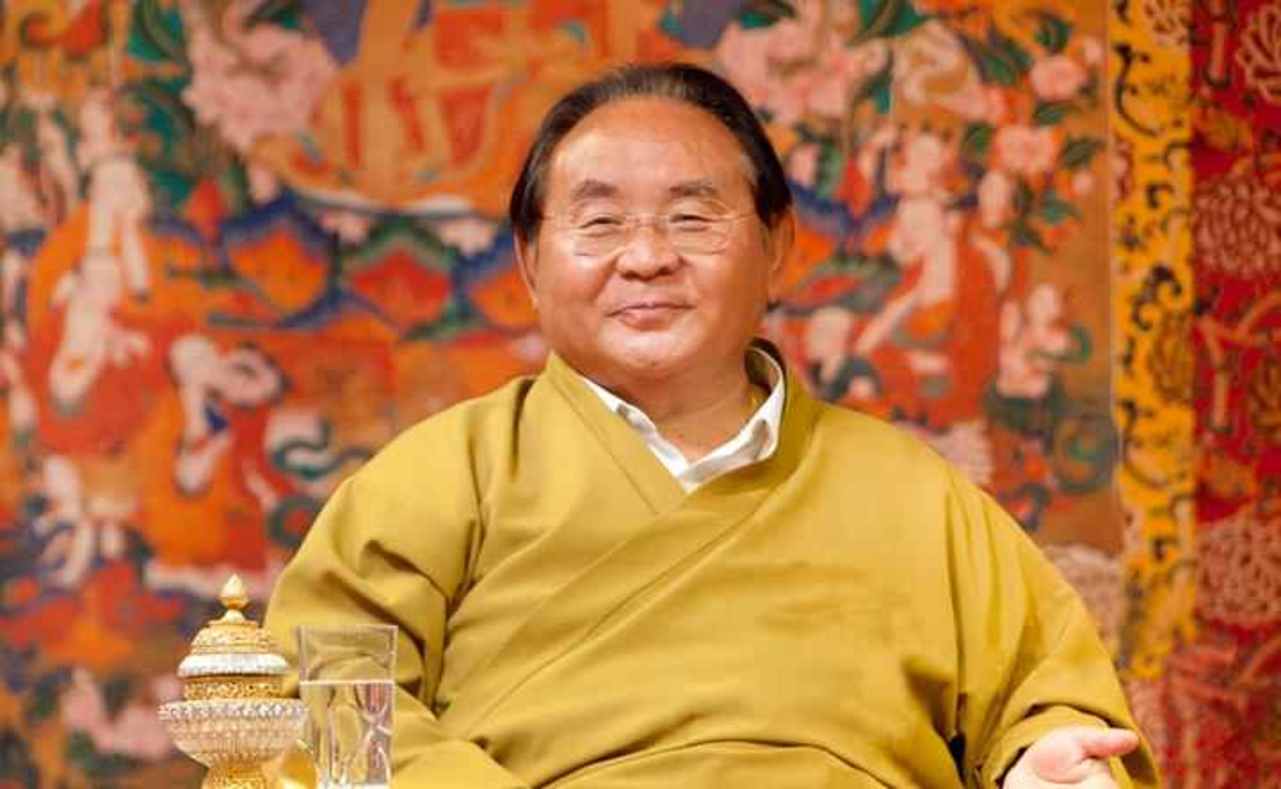The Tibetan Book of Living and Dying Summary
5 min read ⌚
 The Tibetan people are known for the strives to get a broader understanding of this existence.
The Tibetan people are known for the strives to get a broader understanding of this existence.
The material things are not their primary concern, because they are fully-equipped to go the limit and make every effort to move beyond the state of the ego.
Stay with us, for more on this life-altering book.
Who Should Read “The Tibetan Book of Living and Dying”? And Why?
In all honesty, after every decision, we endeavor to polish up our image to make us feel worthier. What about your perspective, where do you put yourself in this whole live-or-die situation?
“The Tibetan Book of Living and Dying” cannot be recommended to one particular group, because it covers a topic that concerns us all.
We advise that you should snatch this book because it most definitely deserves a place on your bookshelf.
About Sogyal Rinpoche
 Sogyal Rinpoche is Tibetan Dzogchen lama born in 1947. He has been teaching the secrets of Buddhism all across Europe for more than 3 decades.
Sogyal Rinpoche is Tibetan Dzogchen lama born in 1947. He has been teaching the secrets of Buddhism all across Europe for more than 3 decades.
He is the author of 4 books including Dzogchen and Padmasambhava, Glimpse After Glimpse & The Future of Buddhism.
“The Tibetan Book of Living and Dying PDF Summary”
Part 1: Living
In the first chapter, the author recalls his first-ever near-death experience and marks it as the main incentive for writing this masterpiece. Sogyal says that he wanted to create a manual, or a guide that will help those looking for the real meaning of life.
He finds inspiration in every breath and summons up the courage to oppose these harmful tendencies that are destroying the sanity of the present moment.
Life and death are in the mind, and nowhere else.
Going deep, and digging up those fears, is an inevitable road one must take, to finds its true nature. There are several chapters explored in this part such as Impermanence, The Nature of Mind, Bringing the Mind Home, The Innermost Essence, Evolution, Karma and Rebirth, Bardos and The Spiritual Path.
Although experts agree that this section, could have been published as a stand-alone book, Rinpoche respectfully disagrees and guides us through more in-depth topics of spirituality.
Gird your loins, and jump on the bandwagon to soak up the peaceful vibe of the book. We are just getting warmed up – let’s plunge deeper.
Part 2: Dying
This section revolves around the concept of death and questions the human nature to be overly afraid of an effortless transition – from one state of beingness to the other. If your moral and religious beliefs don’t overlap, you’ll also be dreaded by the thought of transformation.
We are acting as if we were the last generation on the planet. Without a radical change in heart, in mind, in vision, the earth will end up like Venus, charred and dead.
Sogyal unravels the cause for writing an easy-to-absorb but thoughtful book, which is filled with information and abstract meaning. According to him, it’s about time the people get out from the circle of suffering, and accept life with all its elements.
This section is subdivided into five separate chapters:
-
- Heart Advice on Helping the Dying
-
- Compassion: The Wish-Fulfilling Jewel
-
- Spiritual Help for the Dying
-
- The Practices for Dying
- The Process of Dying
In this section of the book, the author gets the ball rolling with some life-altering quotes, statements, and examples.
He expands on the fear of death and explains that it’s profoundly senseless to love life and feel an aversion to its counterpart.
No one is asking of you to fly in the faces of these emotions, just to cast doubt upon your shallow thinking-patterns and unquestioned beliefs.
As a matter of fact, are they even yours? – Probably not, because every person would rather avoid face-to-face confrontations with its judgments and opinions than to take the bull by the horns.
Don’t get too excited. In the end, it’s neither good nor bad.
The last two chapters are particularly interesting and insightful. If you bury yourself in discovering the message conveyed through these examples, you’ll understand that thinking about death is silly. Such revelation will open your eyes to the possibility that you’ve been misled and misguided.
The author spares no one and goes through the death process step-by-step by examining the different stages of inner acceptance. If you are fearful about what awaits you then, be prepared to face death before passing away.
Part 3: Death and Rebirth
If you bear a grudge against the concept of death, the third part will open the doors to a new way of thinking. Death is only a new beginning, a liberation, which the ego considers a threat to its survival. It’s only that the personhood is trapped in a time-frame and it’s afraid to see the big picture.
This section has several chapters as well:
-
- The Ground
-
- Intrinsic Radiance
-
- The Bardo of Becoming
-
- Helping After Death
- Near-Death Experience: A Staircase to Heaven?
All these chapters, speak about the Buddhist perspective in perceiving life. It examines – how to deal with temporary grief and overwhelming depression.
The part ends with a comprehensive analysis of the near-death experience and outlines the harmony between this thought-provoking angle and the bardo teachings.
Part 4: Conclusion
The last part is wrapped around in two chapters – The Universal Process and The Servants of Peace.
The first chapter, brings to light the concept of death, as something that should be embraced. It explains the universal truth and instigates a new behavior, which supposedly is an integral part of the whole existence.
The second chapter – Servants of Peace, focuses on those people whose minds and spirits are directed towards one goal of becoming a bodhisattva.
Key Lessons from “The Tibetan Book of Living and Dying”
1. Indulge in new practices
2. Don’t regret anything
3. Live in the present moment
Indulge in new practices
The point of being alive is staying flexible and committed to improving each day. If you stagnate, the world will pass you by, and put you, second-in-command.
Find new wisdom in every action, don’t be afraid to move your boundaries, and explore the hidden treasures of existence.
Don’t regret anything
Regretting your decisions, meaning being stuck in the influence of the past events. Such mindset, can only bring you sorrow and put you on your knees.
Stand up, and resist these notions, because this life has a lot more to offer.
Live in the present moment
Even when death comes knocking at your door, you’ll greet it wholeheartedly if you are truly in the presence of your inner-self.
The future is yet to come, the past brings only sadness, so why not being right where you are? You are not inclined to agree with us, just contemplate this proposition.
Like this summary? We’d Like to invite you to download our free 12 min app, for more amazing summaries and audiobooks.
“The Tibetan Book of Living and Dying Quotes”
The nature of everything is illusory and ephemeral, Those with dualistic perception regard suffering as happiness, Like they who lick the honey from a razor’s edge. How pitiful they who cling strongly to concrete reality: Turn your… Share on X There is only one law in the universe that never changes-- that all things change, and that all things are impermanent. Share on X What we have to learn, in both meditation and in life, is to be free of attachment to the good experiences and free of aversion to the negative ones. Share on X Rely on the message of the teacher, not on his personality. Share on X Anyone looking honestly at life will see that we live in a constant state of suspense and ambiguity. Share on XOur Critical Review
The eastern hemisphere has always been more on the mysterious and the spiritual side of things, unlike the westerners who were more of materialistic nature.
Now, we have a chance to combine both approaches and unravel the mystery of death.
Emir is the Head of Marketing at 12min. In his spare time, he loves to meditate and play soccer.







